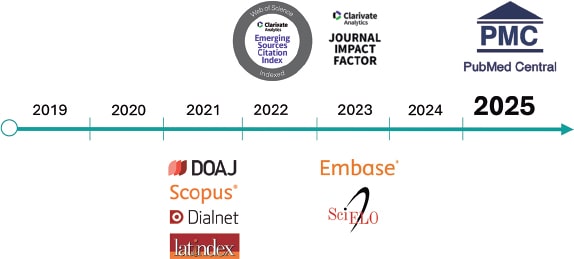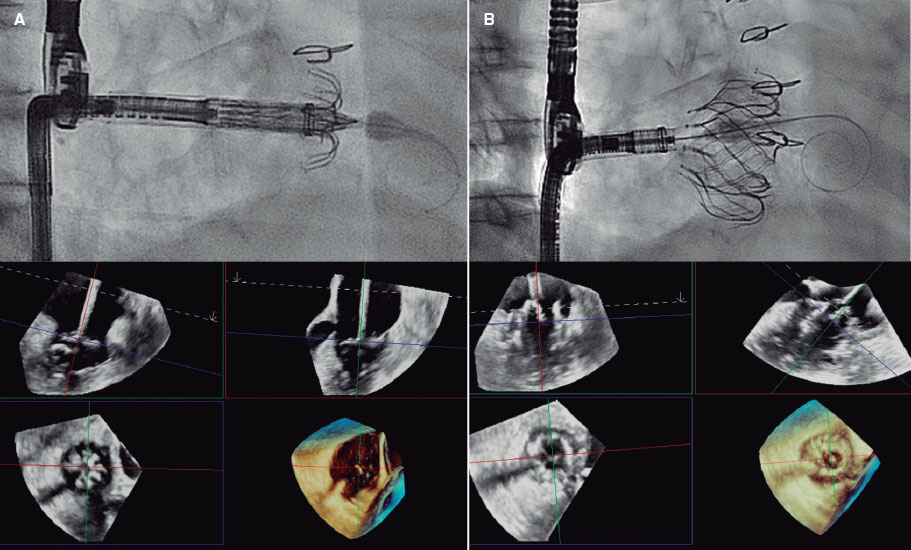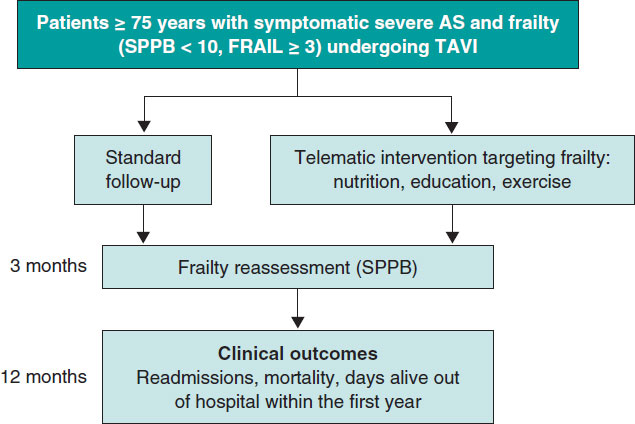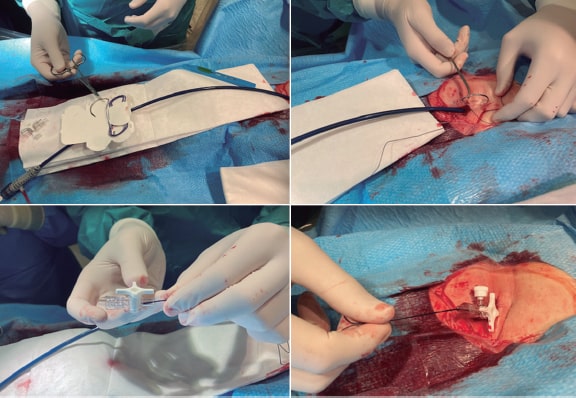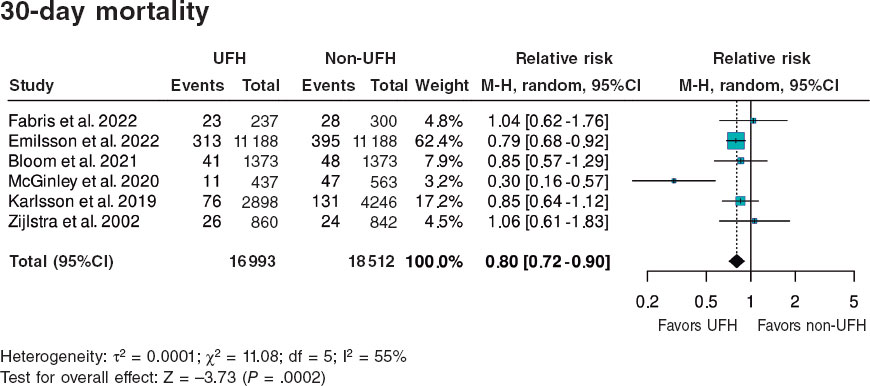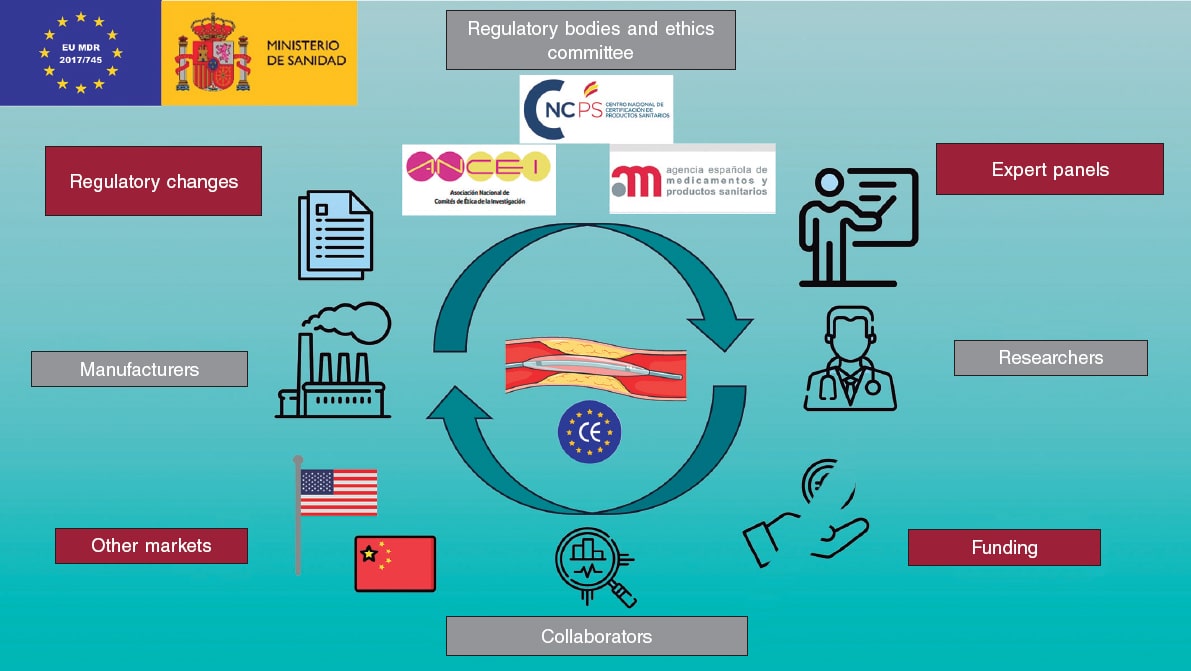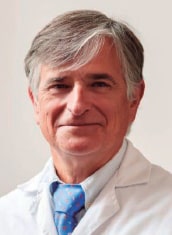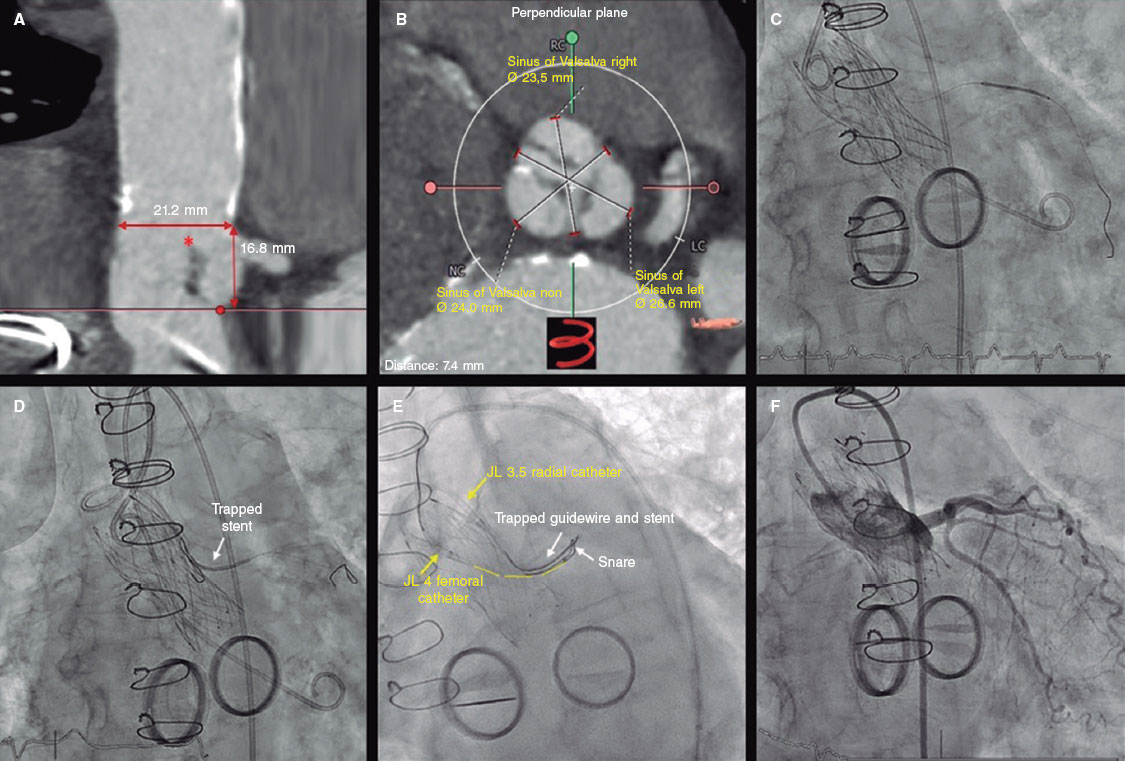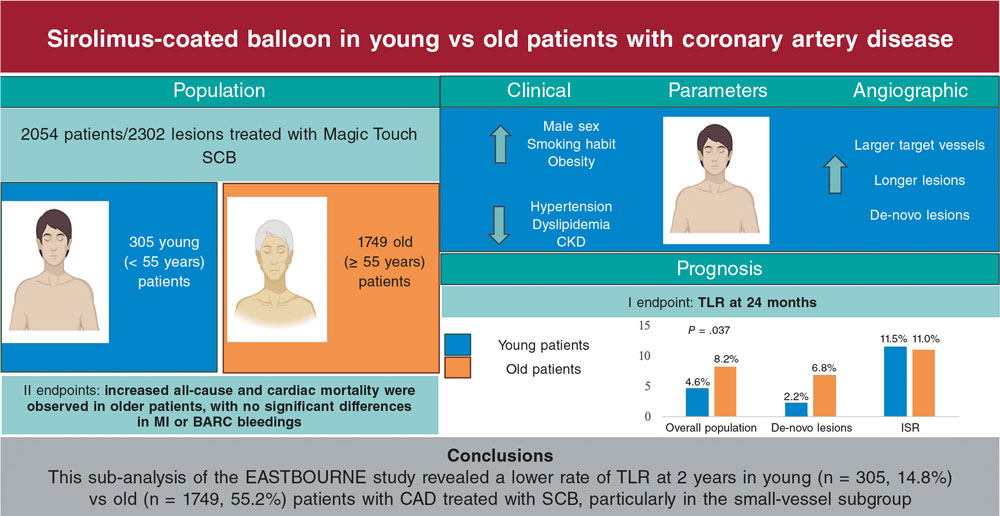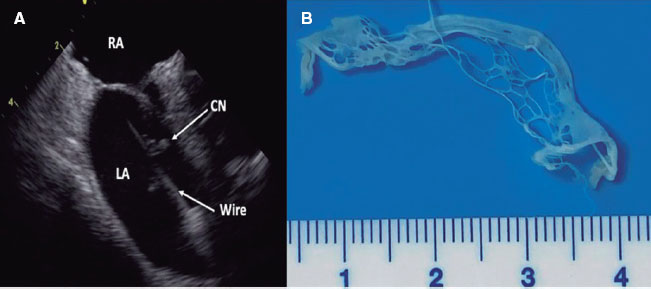Available online: 09/04/2019
Editorial
REC Interv Cardiol. 2020;2:310-312
The future of interventional cardiology
El futuro de la cardiología intervencionista
Emory University School of Medicine, Atlanta, Georgia, United States
When Prometheus’ liver was daily devoured by the eagle that Zeus would send each day to the Caucasus mountains where the titan was kept in chains, pain was the price to pay for disobedience and immortality. Prometheus’ insurrection was sealed after he stole the fire from the gods and gave it to men so they could heat themselves, cook food, make utensils, and have a divine spark inside of them to become spiritual and intelligent beings, thus bringing them a little closer to the gods and away from the animal kingdom. The immortal nature of Prometheus would regenerate the liver only to see it devoured again the next day. Only Hercules put an end to Prometheus’ torment when he broke the chains of his sentence.
This Greek myth of the demi-god is a good analogy of the evolution of medicine from ancient to modern times. Suffering; disease; wisdom; hope; cure, and eventually immortality. It has been the greed shown by Homo sapiens that has tried to conquer the fire stolen by the Greek hero.
It is precisely this human exchange that has allowed us to evolve as a species. We have been able to conquer our planet, cure diseases, control epidemics, and fight our kind to the benefit but also to the detriment of our own world and at the expense of the extinction of millions of species, the very subjugation of death, and the suffering of millions of our own people.
Throughout history, doctors have been perceived by others has holders of some sort of a special talent. The first physicians were healers, shamans who understood the laws of the ancient universe and had a special connection with the divine. In addition to having a secret knowledge of plants, herbs, and minerals with healing potential, their wisdom had been transmitted through oral tradition from one family to the other or through genetic inheritance as some sort of natural selection of only those individuals with the necessary conditions to become healers. These were exceptional individuals among the ancient human groups who were measured by the highest standards and revered by the different societies. They were possibly Prometheus’ chosen ones as holders of that “extra fire”.
Medical science evolved with extraordinary advances for all mankind by drastically reducing child mortality at the end of the 20th century, improving life expectancy in most countries up to 75 years of age (by 2050 the estimates are that human beings will live up to 100 years old), and ultimately by managing successfully most of the diseases that plague the Homo sapiens.1
After the Second World War, medicine was revolutionized, a sort of golden age if you will, with the appearance of antibiotics, vaccines, new anesthetic agents, breaking surgical procedures, and new drugs. Doctors were respected and admired; the doctor-patient interchange was based on conversations and deep scrutiny of the intimate life of individuals and rigorous physical examinations following all rules of semiology.
These advances were followed by universal medical plans and health reforms, making medicine lose its human dimension of that doctor-patient relationship. Thus, the infamous “cost-benefit” ratio became a priority and technology was incentivized creating a gap between humanity and science and, on many occasions, verbal communication, so essential to understand each other, was simply gone and doctors became technicians or service providers overnight whose effectiveness was put under the microscope.
This was the birth of the so-called “junk consultation” that leads to countless complains from users (our patients) who are rushed inside a world of unnecessary tests, studies, and procedures that have an excessive, and in most countries, unsustainable cost for the healthcare system.
The irony is that by improving life expectancy we end up having more old patients who, on many occasions, suffer from loneliness and grief. With today’s medical approach, doctors simply cannot bring any remedies to them. Instead, nearness is needed here to examine the natural condition of man and be able to develop our profession fully by offering that lenitive as part of the medical prescription.
Ms. Ellen Trane Nørby, secretary of health in Denmark, one of the highest ranking countries in effective healthcare systems worldwide has said: “Something must be wrong in Denmark when we’re spending 50% of the healthcare budget in the last 90 days of a human life to delay the inevitable in just a few weeks.”2
Abandonment, sadness, and isolation in old patients who live in developed countries generates astronomical costs at the ER when they are actually looking for social support.
An article published on The New York Times3 has brought the program Element Care –non lucrative and for old adults– to everyone’s attention. This program provides those elderly who are eligible with one tablet with a software and a virtual pet that interacts with them, talks to them about sports and pastimes, shows them memories of their lives and, above all, tells them that they are loved.
The patients know that this device is connected to an emerging startup called Care Coach. They also know that the employees who operate this platform see, listen and give remote answers to them, but at the end of the day they come to love their little pet, feeling that they still mean something and that someone else still cares.3
Today’s society is on a non-stop rampage towards progress. We are modernizing consumption without having developed thought first and we are embarked on a technological frenzy that perpetuates itself and turns us into isolated entities that only interact with one another through cybernetic applications. Let us commit ourselves to becoming social individuals back again and humanizing artificial intelligence. Let us be a replica of our ancestors who lived their lives around the fire given to them by the good titan Prometheus.
As physicians I think we should look in the mirror for just a second and ask ourselves whether we are treating patients the same way we would like to be treated. If the answer is no, let’s make hugs last longer than our well-known narcissism.
CONFLICTS OF INTEREST
None reported.
REFERENCES
1. Harari YN. Sapiens:A brief history of humankind. London:Random House;2014.
2. Maglio P. La dignidad del otro:puentes entre la biología y la biografía. Buenos Aires:Libros del Zorzal;2008.
3. Bowles N. Human Contact Is Now a Luxury Good. The New York Times. 2019. Available online:https://www.nytimes.com/2019/03/23/sunday- review/human-contact-luxury-screens.html. Accessed 1 May 2019.
The optimal management of chronic anticoagulation is still controversial to this day both in clinical cardiology and particularly in interventional cardiology. The progressive aging of the population has increased exponentially the percentage of patients with an indication for chronic oral anticoagulation who undergo percutaneous invasive procedures to up to 5%-10% of the total. Also, most of them suffer from atrial fibrillation.1
Until the arrival of new direct-acting oral anticoagulants (DOAC), most of these patients were anticoagulated with vitamin K antagonists (VKA). Invasive procedures used to be performed after withdrawing oral anticoagulation and using bridging anticoagulation with low molecular weight heparin.2 We believe that this widely used strategy in our setting should be put into question though. In the first place, the prothrombotic rebound effect has been reported as associated with the withdraw and reset of VKA.3 Secondly, the interaction of anticoagulants with a different mechanism of action used in patients on bridging therapy can have pro-hemorrhagic and procoagulant consequences. As a matter of fact, the actual clinical guidelines recommend avoiding the concomitant use of unfractionated heparin in patients undergoing percutaneous coronary interventions (PCI).4 Also, more hemorrhagic complications associated with bridging therapy have been confirmed in patients treated with invasive or surgical procedures (1.3% vs 3.2%),5 in patients undergoing PCI (8.3% vs 1.7% and 6.8% vs 1.6%7), and in one meta-analysis (odds ratio, 5.40; 95% confidence interval, 3.00-9.74).8 Overall, none of these studies revealed more thromboembolic events associated with the absence of bridging therapy.5-8 With the actual evidence available today, we should ask ourselves why many clinical practice protocols in our setting recommend the use of bridging therapy with VKA and low molecular weight heparin in patients on chronic anticoagulation
There is little evidence from the studies published so far that specifically compare uninterrupted strategies with anticoagulation and interrupted strategies without bridging therapy. We could argue that vascular access is safer if used in uncoagulated patients. However, the PCI is a low-risk of bleeding procedure9 when performed through the access of choice which is the radial access1,4 (used in Spain in up to 90% of the cases).10 Also, yet despite the doubts of many interventional cardiologists, therapeutic warfarin treatment seems to provide sufficient anticoagulation for PCI, and additional heparins are not needed and may increase access site complications.11 Actually this is what the clinical guidelines establish when the international normalized ratio (INR) is above 2.54. In any case, we always have this possibility of adding heparin during the PCI, always bearing in mind that when choosing radial access, the incidence of bleeding is low, and the chances of radial occlusion or thrombosis of the materials drop.
Yet despite the growing use of DOACs in the clinical practice, the evidence available today for its use during the procedure is scarce in patients undergoing PCI. This contrasts with the benefit shown with the use of VKA in revascularized patients who need antiplatelet therapy12 or even as adjuvant therapy for the management of acute coronary syndrome.4 In an article published on REC: Interventional Cardiology, Ramírez Guijarro et al.13 talk about their own initial experience with same-day diagnostic catheterizations without DOAC withdrawal in patients on chronic anticoagulation. It is interesting that no differences were seen in the incidence of hemorrhages or radial occlusions compared to patients without prior antiplatelet therapy or with uninterrupted therapy with VKA. The way we see it, this is a pioneering strategy in our setting which, although it does not validate its use in PCIs with stent implantation, it provides evidence in the right direction. In our opinion, the uninterrupted strategy of anticoagulation when using the radial access has 2 main advantages. The first advantage is the simplification of the procedure for doctors and patients alike especially in outpatient same-day procedures. The benefit of this simplification is potentially higher in patients treated with DOACs since the monitoring of the INR is not necessary at admission and the complexity of withdrawal protocols is avoided based on the half-life of DOACs and renal function. The second advantage is the safety shown with its use since it reduces bleeding complications without improving thromboembolic complications.
In sum, with the evidence available today we know that: a) we should avoid prescribing systematic bridging therapy with low molecular weight heparin in patients undergoing catheterizations/PCI. When dealing with a procedure where there is a high risk of bleeding, the best thing to do is to withdraw anticoagulation without using bridging therapy in patients with non-valvular atrial fibrillation; b) we should keep VKAs during catheterizations/PCIs performed through radial access; c) stent implantation seems safe with VKA, but heparin can also be prescribed based on the INR and experience; d) diagnostic catheterizations on DOAC therapy seem safe.
In sum, we still need more evidence on this ongoing debate. Studies like the one conducted by Ramírez Guijarro et al.13 are extremely useful but future randomized trials should elucidate what the best antithrombotic strategy is for stent implantation in patients treated with DOAC or VKA. Similarly, clinical guidelines should come to terms on the actual recommendations based on the evidence available today since they do not agree on many issues as table 1 shows. The ultimate goal should be finding the optimal strategy which should be easy to implement, effective, and safe for our patients.
Table 1. Summary of actual anticoagulation recommendations in patients who are going to undergo invasive procedures
| Group | Recommendations for patients treated with VKA | Recommendations for patients treated with DOAC |
|---|---|---|
| ACC 2012 Consensus Document on standards at the cath. lab2 | - Withdraw - INR < 2.2 for radial access | - Always withdraw dabigatran |
| ESC 2015 Guidelines on the management of NSTEACS4 | - Uninterrupted strategy - Without parenteral anticoagulation when INR > 2.5 - Additional dose of parenteral anticoagulation when INR < 2.5 | - Uninterrupted strategy - Always administer additional dose of parenteral anticoagulation (60 IU/kg of UFH) |
| ESC 2017 Guidelines on the management of STEMI14 | - Uninterrupted strategy - Always administer additional parenteral anticoagulation | - Uninterrupted strategy - Always administer additional parenteral anticoagulation |
| ACC 2017 Consensus Document on the management of anticoagulation during the procedure in patients with non-valvular atrial fibrillation9 | - Uninterrupted strategy without bridging therapy | - Withdraw for 24-96 h - No bridging therapy |
| AHA Position Statement on DOAC therapies15 | - Withdraw for 12-48 h - Consider bridging therapy with heparin in the presence of high embolic risk - Add heparin during the procedure | |
| European EHRA, EAPCI, ACCA Consensus Document 2018 on anticoagulation in patients undergoing interventional procedures1 | - Uninterrupted strategy - Administer 30-50 IU/kg of UFH | -Withdraw for 12-48 h without bridging therapy with elective percutaneous coronary interventions - Administer 70-100 IU/kg of UFH |
|
ACC, American College of Cardiology; ACCA, European Association of Acute Cardiac Care; AHA: American Heart Association; DOAC, direct-acting oral anticoagulants; EAPCI, European Association of Percutaneous Cardiovascular Interventions; EHRA: European Heart Rhythm Association; ESC, European Society of Cardiology; INR, international normalized ratio; NSTEACS, non-ST-segment elevation acute coronary syndrome; STEMI, ST-elevation acute myocardial infarction; UFH, unfractionated heparin; VKA, vitamin K antagonists. |
||
CONFLICTS OF INTEREST
None reported.
REFERENCES
1. Lip GYH, Collet JP, Haude M, et al. 2018 Joint European consensus document on the management of antithrombotic therapy in atrial fibrillation patients presenting with acute coronary syndrome and/or undergoing percutaneous cardiovascular interventions:a joint consensus document of the European Heart Rhythm Association (EHRA), European Society of Cardiology Working Group on Thrombosis, European Association of Percutaneous Cardiovascular Interventions (EAPCI), and European Association of Acute Cardiac Care (ACCA) endorsed by the Heart Rhythm Society (HRS), Asia-Pacific Heart Rhythm Society (APHRS), Latin America Heart Rhythm Society (LAHRS), and Cardiac Arrhythmia Society of Southern Africa (CASSA). Europace. 2019;21:192-193.
2. Bashore TM, Balter S, Barac A, et al. 2012 American College of Cardiology Foundation/Society for Cardiovascular Angiography and Interventions expert consensus document on cardiac catheterization laboratory standards update:A report of the American College of Cardiology Foundation Task Force on Expert Consensus documents developed in collaboration with the Society of Thoracic Surgeons and Society for Vascular Medicine. J Am Coll Cardiol. 2012;59:2221-2305.
3. Grip L, Blombäck M, Schulman S. Hypercoagulable state and thromboembolism following warfarin withdrawal in post-myocardial-infarction patients. Eur Heart J. 1991;12:1225-1233.
4. Roffi M, Patrono C, Collet JP, et al. 2015 ESC Guidelines for the Management of Acute Coronary Syndromes in Patients Presenting Without Persistent ST-segment Elevation. Rev Esp Cardiol. 2015;68:1125.
5. Douketis JD, Spyropoulos AC, Kaatz S, et al. Perioperative Bridging Anticoagulation in Patients with Atrial Fibrillation. N Engl J Med. 2015;373:823-833.
6. Lahtela H, Rubboli A, Schlitt A, et al. Heparin bridging vs. uninterrupted oral anticoagulation in patients with Atrial Fibrillation undergoing Coronary Artery Stenting. Results from the AFCAS registry. Circ J. 2012;76:1363-1368.
7. Annala AP, Karjalainen PP, Porela P, Nyman K, Ylitalo A, Airaksinen KE. Safety of diagnostic coronary angiography during uninterrupted therapeutic warfarin treatment. Am J Cardiol. 2008;102:386-390.
8. Siegal D, Yudin J, Kaatz S, Douketis JD, Lim W, Spyropoulos AC. Periprocedural heparin bridging in patients receiving vitamin K antagonists:systematic review and meta-analysis of bleeding and thromboembolic rates. Circulation. 2012;126:1630-1639.
9. Doherty JU, Gluckman TJ, Hucker WJ, et al. 2017 ACC Expert Consensus Decision Pathway for Periprocedural Management of Anticoagulation in Patients With Nonvalvular Atrial Fibrillation:A Report of the American College of Cardiology Clinical Expert Consensus Document Task Force. J Am Coll Cardiol.2017;69:871-898.
10. Cid Álvarez AB, Rodríguez Leor O, Moreno R, Pérez de Prado A. Spanish Cardiac Catheterization and Coronary Intervention Registry. 27th Official Report of the Spanish Society of Cardiology Working Group on Cardiac Catheterization and Interventional Cardiology (1990-2017). Rev Esp Cardiol. 2018;71:1036-1046.
11. Kiviniemi T, Karjalainen P, PietiläM, et al. Comparison of additional versus no additional heparin during therapeutic oral anticoagulation in patients undergoing percutaneous coronary intervention. Am J Cardiol. 2012;110:30-35.
12. Lopes RD, Heizer G, Aronson R, et al. Antithrombotic Therapy after Acute Coronary Syndrome or PCI in Atrial Fibrillation. N Engl J Med. 2019;380:1509-1524.
13. Ramírez Guijarro C, Gutiérrez Díez A, Córdoba Soriano JG, et al. Safety profile of outpatient diagnostic catheterization procedures in patients under direct-acting oral anticoagulants. REC Interv Cardiol. 2019;1:161-166.
14. Ibañez B, James S, Agewall S, et al. 2017 ESC Guidelines for the management of acute myocardial infarction in patients presenting with ST-segment elevation. Rev Esp Cardiol. 2017;70:1082.e1-e61.
15. Raval AN, Cigarroa JE, Chung MK, et al. Management of Patients on Non-Vitamin K Antagonist Oral Anticoagulants in the Acute Care and Periprocedural Setting:A Scientific Statement From the American Heart Association. Circulation. 2017;135:e604-e633.
Social media and the internet have changed the way we communicate with each other. We have never had so much information on this or that topic and never in such a direct, fast and global way. However, this new era does not come without risks and because everybody can be a potential creator of content, information itself has never been so susceptible to bias and demagogy.
The capacity of social media to expose information quickly and generate discussion among users has given rise to its application in the world of policy, business, radio broadcasts and academia world.1 Medicine is no stranger to this technological renewal and today we have doctors who are media-savvy. As it happens in many other aspects, cardiology is at the frontline of this trend.
As well as practical training and technical skills, essential for interventional cardiologists, theoretical training and constant update are also indispensable. The subjects covered in our core curriculum are increasingly difficult to apprehend since they include topics not only from general cardiology but also from interventional cardiology: physiology and coronary imaging, hemodynamics, techniques for the percutaneous treatment of coronary lesions (more and more complex) and structural cardiomyopathies, knowledge of devices and technical development, etc.
An ideal educational environment for interventional cardiologists should provide interesting and quality information that should be available to the largest possible number of users. Also, it should anticipate the participation of these users and update the contents in an ongoing basis.
Theoretical training that until recently was based on textbooks and printed articles has evolved into digital documents we can read in our computers or smartphones anywhere and at any time. In this context, social media provide a different teaching experience that is complementary and, at times, even better than the teaching experience provided through the traditional mechanisms by which academic information used to be broadcast, used and integrated in the routine clinical practice of interventional cardiologists.2
Today it is common that scientific meetings are announced in advanced, broadcast live and commented later on social media. At every meeting we see influencers competing to turn their contents into trending topics. This is how a series of results and comments end up in social media creating a virtual link between the attendees to these conferences and those who follow them digitally through viral terms such as #CardioTwitter.2
Aside from the immediacy and speed of broadcasting, the most significant difference between the on-site discussions that are held at meetings and those that take plance on the social media is the number of active participants. Probably in no other forum, interventional cardiologists on training can start peer-to-peer debates with the leading researchers of landmark studies.2
So, anybody with a real interest can be instantaneously briefed on the latest studies presented at the most important international meetings without having to actually attend the meetings. And even when it is not possible to watch live from social media, scientific online platforms such as PCRonline.com, tctmd.com, and hemodinamica.com give access to these contents after the meetings. We should emphasize here that we also enjoy these 100% virtual conferences through platforms such as eCardio, organized by the Spanish Society of Cardiology, with an increasing number of followers.
Over the last few years, an increase in the number of users and Twitter activity has been documented during the main scientific cardiological meetings. This not only has not had a negative impact on on-site attendance1 but has brought the attendees closer to the conferences, improved networking and spurred the wish to attend future events.3 These findings are indicative that the use of social media during scientific meetings improves communication and promotes educational and research efforts. Despite the early resistance from certain medical societies, the use of Twitter during these meetings has become an important and almost essential element for scientific broadcast and medical educational purposes.1,2
Aside from the training that actually takes place in these meetings, scientific journals on interventional cardiology are second to none and they usually include, as part of their editorial team, community managers who run their social media. The number of followers on Twitter is more and more important to them and it has actually grown exponentially over the last few years. Today it is not unusual to see that the leading author’s Twitter account user name is one of the requisites established by these journals during the manuscript submission process.
Another development brought to this context by social media is the possibility to open up debates and create scientific review-like content trends about a specific subject on real time. Traditionally, the publication of this or that research was based on contributions from its authors and comments from selected reviewers and editors. Today, however, the critical analysis that follows the publication of landmark studies on social media has given rise to reviews coming from the CardioTwitter community. We have witnessed the almost surgical dissection of studies such as the #ORBITA (from pre-randomization medication to the design and details of its statistical analysis).2
This new way of broadcasting research studies has put into question what indicators should be used to measure the true impact factor of academic papers since now they are shared not only through traditional means but also through various alternative means including social media.4
Beyond meetings and journals, social media facilitate communication with other colleagues which is an essential tool of the learning process. This nearness among colleagues and the creation of scientific communities have become something common among cardiologists who are active on social media. The support expressed through comments, experiences and researches from others or simply by clicking like and retweet has built social bridges across the world in a way that facilitates and improves academic collaborations.2 In the past, technical or technological advances would take years after being discovered before being publicly implemented; today this process has been reduced to a matter of days. The percutaneous access through the distal left radial artery is an example. It was on social media before it was even made public through the traditional means of communication.5
Beyond all the potential advantages of social media as an educational tool, we cannot omit aspects that may be negative in this context. We should bear in mind that it is not always possible to confirm the validity of the content being broadcast and the accuracy of data provided. Also, fake news may travel faster on the social media as opposed to actual news.6 In cardiology, as it happens in other fields, the speed at which news travel on social media may be governed by factors unrelated to their validity.2 Also, the concision required by this type of platforms favors simplicity as opposed to accuracy and novelty as opposed to detailed information. The democratization brought by participating in these scientific debates where anybody can give their opinion can perversely lead to demagogy triggered by the popularity of the somehow most sarcastic or impacting comments.2
In sum, social media in general and Twitter in particular have given voice to interventional cardiologists from all across the field, created an open platform for the discussion and instantaneous review of academic and teaching materials on real time, and eventually improved the connection among the different communities that create and receive studies.2 However, the practical lack of filters and monitoring in the generation and transmission of these contents comes at a price. Even through the benefits of social media as an educational tool are evident, we should profit from it without losing sight of the complex training process that we, interventional cardiologists, have to go through where conferences, treaties, articles, mentors, teachers, colleagues, and patients are the sources of knowledge we learn from on a daily basis.
CONFLICTS OF INTEREST
The author declared no conflicts of interest whatsoever.
REFERENCES
1. Tanoue MT, Chatterjee D, Nguyen HL, et al. Tweeting the Meeting. Circ Cardiovasc Qual Outcomes. 2018;11:e005018.
2. Yeh RW. Academic Cardiology and Social Media:Navigating the Wisdom and Madness of the Crowd. Circ Cardiovasc Qual Outcomes. 2018;11:e004736.
3. Mishori R, Levy B, Donvan B. Twitter use at a family medicine conference:analyzing #STFM13. Fam Med. 2014;46:608-614.
4. Trueger NS, Thoma B, Hsu CH, Sullivan D, Peters L, Lin M. The Altmetric Score:A New Measure for Article-Level Dissemination and Impact. Ann Emerg Med. 2015;66:549-553.
5. Kiemeneij F. Left distal transradial coronary access. Available online:https://www.youtube.com/embed/-If5oAF0KJo. Accessed 8 Mar 2019.
6. Lazer DMJ, Baum MA, Benkler Y, et al. The science of fake news. Science. 2018;359:1094-1096.
The procedures of interventional cardiology provide an unquestionable benefit for patients who suffer from heart disease but require the intensive use of ionizing radiations that are somehow risky for the patients and the healthcare providers who participate in these interventional procedures. The radiological protection programs should be an important part of the quality systems used in this medical practice.
Should we be worried about the reported cases of radiation- induced skin lesions in patients, or about the radiation-induced cataracts or brain tumors suffered by some interventional surgeons? The answer is “no” but only as long as we are aware of the risks involved when using ionizing radiations, the radiological protection measures available, and know how to use them appropriately. The radiation dose levels that patients and healthcare providers receive should be measured, recorded and audited periodically and the necessary correcting measures implemented when these levels are high.
A question that any interventional cardiologist should be able to answer is whether he knows what doses of radiation are his patients receiving and what occupational doses of radiation is his personal dosage-meter recording. If the answer is negative, then maybe he should be worried because if these levels were high, he would not know what correcting measures he should implement to reduce them.
INTERNATIONAL RECOMMENDATIONS ON RADIOLOGY PROTECTION IN CARDIOLOGY
The International Commission on Radiological Protection (ICRP) and other international organizations and interventional cardiology and radiology societies have designed good clinical practice recommendations for the management of ionizing radiations.1-3
The Spanish and European4 legislation require quality control programs for all x-ray machines and that the healthcare providers involved have proper radiological protection knowledge and are certified by the corresponding authority. Also, that the doses of radiation received by patients and professionals alike are measured and shared on a regular basis with the so-called reference levels for diagnostic purposes (when it comes to patients)5 and with radiation dose limits (when it comes to healthcare providers).
EFFECTS OF IONIZING RADIATION
Exposure to ionizing radiation can produce stochastic effects (probabilistic) and deterministic effects (also called tissue effects).6
The ICRP has recently proposed7 new dose thresholds of 0.5 Gy for the opacities of the crystalline lens (cataracts) and cardiovascular and cerebrovascular effects and has suggested a new dose threshold for occupational doses of 20 mSv/year for the crystalline lens, much lower than the previous levels of 150 mSv/year. This new threshold has already been included in the European legislation4, which translates into a stricter control of occupational doses for interventional healthcare providers.
RISKS OF RADIATION-INDUCED CATARACTS IN HEALTHCARE PROFESSIONALS AND SOME CASES OF BRAIN TUMORS
Over the last few years and long before the ICRP decided to propose a new dose threshold for radiation-induced lesions in the crystalline lens and bring the occupational dose limits down to 20 mSv/year, the International Atomic Energy Agency had already conducted several studies to evaluate radiation-induced opacities in cardiologists of Latin America, Asia, and Europe as part of their RELID (Retrospective Evaluation of Lens Injuries and Dose) program. The overall results showed a significant number of healthcare providers and nurse specialists with opacities that may have been caused by ionizing radiations after years working and not using the adequate radiological protection measures. In the dose estimates, healthcare professionals were found who may have received doses > 1 Gy in the crystalline lens through the years due to inadequate protection. The scarce use of personal dosage meters among professionals was studied too.8
If the overhead radiation shields present in almost all cath labs are not used correctly, the disperse radiation exposure of eyes (and head) can be substantial, especially if maintained over several years.
Several cases of brain tumors in interventional surgeons have also been published, although with scarce analyses on the occupational doses that these healthcare providers may have received.9
However, no epidemiological studies have been conducted so far that confirm the possible cause-effect relation and further research on this issue has been suggested.10 Recently, several studies have been published that rule out the connection between low doses of radiation and brain tumors.11
NEW EUROPEAN REGULATIONS ON BASIC SAFETY STANDARDS
The recent Council Directive 2013/59/EURATOM on basic safety standards,4 that is actually in the process of transposition and implementation in countries of the European Union, stresses several aspects of radiological protection in interventional procedures. X-ray machines should show the dose that is being emitted to the patients while the procedure is being conducted and once it is over. Also, these doses should be shown in the procedural reports, at least in the new x-ray machines, and they should be compared to the reference levels for diagnostic purposes. Also, correcting measures should be implemented without delay if these levels are exceeded.
If the doses of radiation received by the patients turn out to be high with the corresponding risk of causing radiation-induced lesions to the skin, then quality assurance programs with the appropriate clinical follow-up should be taken into consideration. Also, patients should be informed.
RADIATION DOSES IN INTERVENTIONAL CARDIOLOGY IN SPAIN
The European and Spanish legislations establish that the dose of radiation received by populations medically exposed to ionizing radiations should be measured. Based on the results from the activity registries found by the Working Group on Hemodynamics and Interventional Cardiology of the Spanish Society of Cardiology (SEC) and the DOCCACI (Dosimetry and quality criteria in interventional cardiology) program12 the contribution of interventional cardiology to the overall radiation dose in Spain13 has been estimated and quantified in 4% of the total use of x-ray machines in medicine. The overall dose per inhabitant derived from interventional cardiology procedures stands at around 0.03 mSv per inhabitant/year. This value is the same as the value found in the United Kingdom, it is half the value found in Switzerland (0.06 mSv), and six times higher than the value found in Germany and the United States (0.2 mSv).13
WHAT SHOULD WE DO TO WORK SAFELY WITH IONIZING RADIATIONS?
Since we cannot improve what we are not measuring or what we do not know, we need to stress here how important it is to always use personal dosage meters and elements for personal protection, while paying special attention to the occupational dose levels we are receiving.
All interventional teams have devices available that inform them on the dose of radiation received by the patients. We should be paying attention to these dose levels and compare them periodically with the reference levels regularly updated by the Working Group on Hemodynamics and Interventional Cardiology of the Spanish Society of Cardiology (SEC) through the DOCCACI program.12
Also, we should take advantage of the collaboration from specialists on medical physics (or hospital radiophysics) that the new European Council directive has included as necessary for interventional procedures.
CONFLICTS OF INTEREST
The author declared no conflicts of interest whatsoever with respect to this study.
REFERENCES
1. ICRP Publication 120. Radiological protection in cardiology. Ann ICRP. 2013;42:1-125.
2. Sarkozy A, De Potter T, Heidbuchel H, et al. ESC Occupational radiation exposure in the electrophysiology laboratory with a focus on personnel with reproductive potential and during pregnancy:A European Heart Rhythm Association (EHRA) consensus document endorsed by the Heart Rhythm Society (HRS). Europace. 2017;19:1909-1922.
3. Picano E, Vano E, Rehani MM, et al. The appropriate and justified use of medical radiation in cardiovascular imaging:a position document of the ESC Associations of Cardiovascular Imaging, Percutaneous Cardiovascular Interventions and Electrophysiology. Eur Heart J. 2014;35:665-672.
4. Council Directive 2013/59/EURATOM of 5 December 2013 laying down basic safety standards for protection against the dangers arising from exposure to ionising radiation. EU Official Journal 17 January 2014. Available online: https://eur-lex.europa.eu/legal-content/EN/TXT/?uri=CELEX%3A32013L0059. Accessed 22 Feb 2019.
5. ICRP Publication 135:Diagnostic Reference Levels in Medical Imaging. Ann ICRP. 2017;46:1-144.
6. ICRP Publication 103:The 2007 Recommendations of the International Commission on Radiological Protection. Ann ICRP. 2007;37:1-332.
7. ICRP publication 118. ICRP statement on tissue reactions and early and late effects of radiation in normal tissues and organs - Threshold doses for tissue reactions in a radiation protection context. Ann ICRP. 2012;41:1-322.
8. Vano E, Kleiman NJ, Duran A, Romano-Miller M, Rehani MM. Radiation-associated lens opacities in catheterization personnel:results of a survey and direct assessments. J Vasc Interv Radiol. 2013;24:197-204.
9. Roguin A. Brain tumours among interventional cardiologists:a call for alarm?Eur Heart J. 2012;33:1850-1.
10. Picano E, Vano E, Domenici L, Bottai M, Thierry-Chef I. Cancer and non-cancer brain and eye effects of chronic low-dose ionizing radiation exposure. BMC Cancer. 2012;12:157.
11. Linet MS, Kitahara CM, Ntowe E, et al. Multi-Specialty Occupational Health Group. Mortality in U.S. Physicians Likely to Perform Fluoroscopy-guided Interventional Procedures Compared with Psychiatrists, 1979 to 2008. Radiology. 2017;284:482-494.
12. Sánchez RM, Vano E, Fernández JM, Escaned J, Goicolea J, PifarréX. DOCCACI Group. Initial results from a national follow-up program to monitor radiation doses for patients in interventional cardiology. Rev Esp Cardiol. 2014;67:63-65.
13. Sánchez Casanueva RM, Vano Carruana E, Fernández Soto JM, Fernández-Ortiz A, Alfonso Manterola F, Goicolea Ruigómez J. Contribution of interventional cardiology to the collective dose in Spain. J Radiol Prot. 2018;38:N1-N7.
Academic journals devoted to the field of interventional cardiology have become an unmatched source of information over the last decade or so, keeping us up-to-date with the latest developments and broadening our horizons as interventional cardiologists. As we celebrate the arrival of a new peer-reviewed journal in interventional cardiology, REC: Interventional Cardiology,1 we take the opportunity to reflect on recent developments in cardiology and contemplate the future direction of this dynamic and diverse specialty.
The development of coronary catheterisation by Sones in 1958, followed by the introduction of dedicated coronary catheters by Judkins and Amplatz in 1967, and ultimately, the introduction of percutaneous coronary intervention (PCI) by Grüntzig in 1977 established interventional cardiology as a subspecialty of general cardiology.2 The first coronary stenting procedures conducted by Sigwart and Paul in 1986 and the subsequent development of drug-eluting stents with succeeding iterations, along with other advances in device technologies, transcatheter techniques, and adjunctive pharmacotherapies, have facilitated treatment of more and more complex patients- and lesion-subsets with PCI. Coincidentally, the development of percutaneous interventions for the management of structural heart disease resulted in the emergence of a new subspecialty of cardiac transcatheter interventions: structural intervention. The inception of transcatheter aortic valve implantation (TAVI) by Cribier in 2002 revolutionised the treatment of aortic stenosis.3 More recently, transcatheter edge-to-edge mitral valve repair has been shown to be beneficial for moderate-to-severe or severe structural or secondary mitral valve regurgitation.4,5 Such advances have arguably resulted in structural intervention becoming the fastest growing subspecialty within the field of cardiology. The introduction of the electrophysiology study into clinical practice in the late 1960s, followed by the development of catheter ablation (initially through the delivery of high energy shocks to interrupt conduction, and later using radiofrequency current, the latter pioneered by Budde, Breithardt and Borggrefe) resulted in the widespread adoption of transcatheter therapies for the management of cardiac arrhythmias.6 In summary, the field of cardiac transcatheter interventions now includes three distinct subspecialties: coronary intervention, structural intervention, and catheter ablation.
The setting-up of subspecialties of transcatheter intervention is certainly beneficial to patients. It increases the availability of state-of-the-art cardiac care provided by highly-skilled physicians and allows the treatment of high-risk patients who would have previously been managed conservatively. Indeed, it has been shown that the management of patients by the relevant cardiology subspecialist reduces the length of hospital stay, cardiac readmissions, and mortality.7
However, the division of cardiology into niche subspecialties also has potential negative implications for patients and cardiologists alike. With respect to patients, highly subspecialised cardiologists may tend to be more focused on the condition or intervention at hand than on the patient as a whole. However, in our increasingly elderly cardiac patients, such conditions rarely occur in isolation: coronary artery disease, valvular heart disease, and cardiac arrhythmias frequently coexist. In addition, a cardiologist performing an intervention may not see the patient again before discharge and the success of the catheterization may be a distraction from the need to optimize other issues related to medical management, such as intensifying preventive therapies or optimising heart failure or antianginal medication. For both referring physicians and patients, the division of cardiology adds a degree of complexity to the referral process. It may be difficult for the referring physician to decide at the time of the referral what cardiology subspecialist will most appropriately manage the patient’s ailment.
Finally, for cardiologists, subspecialisation has resulted in more difficult training. Is it appropriate for trainees to start to perform catheter ablations before completing their basic cardiology training? Is it advisable that trainees start their training in structural intervention before being competent in performing coronary interventions? Either situation would seem ill-advised but the trade-off is longer training that adds to an already onerous training path in general cardiology.
There is also a risk of isolation from cardiology colleagues in other subspecialties. Ironically, at a time when both European and American guidelines for clinical practice recommend a multidisciplinary or “heart team” approach to the management of patients with valvular heart disease8,9 bringing together interventional cardiologists, cardiac surgeons, cardiac imaging specialists, and anesthesiologists, the specialty of cardiology has never been so divided. Structural interventional cardiologists now frequently work more closely with cardiac surgeons than with other cardiologists. Whereas, in the past, ward rounds on the cardiology ward often included cardiologists from numerous subspecialties covering all aspects of cardiac care, nowadays, in many centres, interventional cardiac subspecialties work independently from general cardiology or other subspecialties. We are beginning to reach a point where it can be difficult to set up a heart team with our own cardiology colleagues.
Whom does such a structure serve? Subspecialisation is defined by the operator and his expertise. Arguably such a structure is more physician- than patient-oriented, with each subspecialty managing one condition rather than the patient as a whole. However, we should not lose sight of the big picture. Our management goals should be patient-centred rather than diagnosis- or procedure-centred. In patients requiring multiple interventions from different subspecialties, decisions on the appropriate order of such interventions should be made collectively with our colleagues and not in isolation. As we continue to treat older, more complex patients with a heavier co-morbidity burden, co-operation between cardiology (and non-cardiology) subspecialties will become more important than ever.
In summary, while the arrival of highly-specialised cardiologists should be welcome, the side-effect of the division of cardiology should be avoided. United as cardiologists, we are in a stronger position to provide better care for our patients, exchange ideas, learn from one another, and collaborate on projects. We need to learn to have the courage to call ourselves cardiologists rather than let our subspecialties define us. Otherwise, if the current trend continues, future clinical practice guidelines in cardiology will need to advocate for a multidisciplinary approach between cardiology subspecialties in patient-care, while the current recommendations for a heart team approach between medical and surgical disciplines will take lower priority.
CONFLICTS OF INTEREST
The authors declare no conflicts of interest.
REFERENCES
1. REC:Interventional Cardiology. Available at: www.recintervcardiol.org/en.
2. Colleran R, Kastrati A. Percutaneous coronary intervention:balloons, stents and scaffolds. Clin Res Cardiol. 2018;107:55-63.
3. Cribier A. Commemorating the 15-year anniversary of TAVI:insights into the early stages of development, from concept to human application, and perspectives. EuroIntervention. 2017;13:29-37.
4. Feldman T, Foster E, Glower DD, et al. Percutaneous repair or surgery for mitral regurgitation. New Engl J Med. 2011;364:1395-1406.
5. Stone GW, Lindenfeld J, Abraham WT, et al. Transcatheter Mitral-Valve Repair in Patients with Heart Failure. New Engl J Med. 2018;379:2307-2318.
6. Wellens HJ. Cardiac arrhythmias:the quest for a cure:a historical perspective. J Am Coll Cardiol. 2004;44:1155-1163.
7. Pathik B, De Pasquale CG, McGavigan AD, et al. Subspecialisation in cardiology care and outcome:should clinical services be redesigned, again?Intern Med J. 2016;46:158-166.
8. Baumgartner H, Falk V, Bax JJ, et al. 2017 ESC/EACTS Guidelines for the management of valvular heart disease. Eur Heart J. 2017;38:2739-2791.
9. Nishimura RA, Otto CM, Bonow RO, et al. 2017 AHA/ACC Focused Update of the 2014 AHA/ACC Guideline for the Management of Patients With Valvular Heart Disease:A Report of the American College of Cardiology/American Heart Association Task Force on Clinical Practice Guidelines. Circulation. 2017;135:e1159-e1195.
Subcategories
Editor's page
Original articles
Editorials
Original articles
Editorials
Post-TAVI management of frail patients: outcomes beyond implantation
Unidad de Hemodinámica y Cardiología Intervencionista, Servicio de Cardiología, Hospital General Universitario de Elche, Elche, Alicante, Spain
Original articles
Debate
Debate: Does the distal radial approach offer added value over the conventional radial approach?
Yes, it does
Servicio de Cardiología, Hospital Universitario Sant Joan d’Alacant, Alicante, Spain
No, it does not
Unidad de Cardiología Intervencionista, Servicio de Cardiología, Hospital Universitario Galdakao, Galdakao, Vizcaya, España


